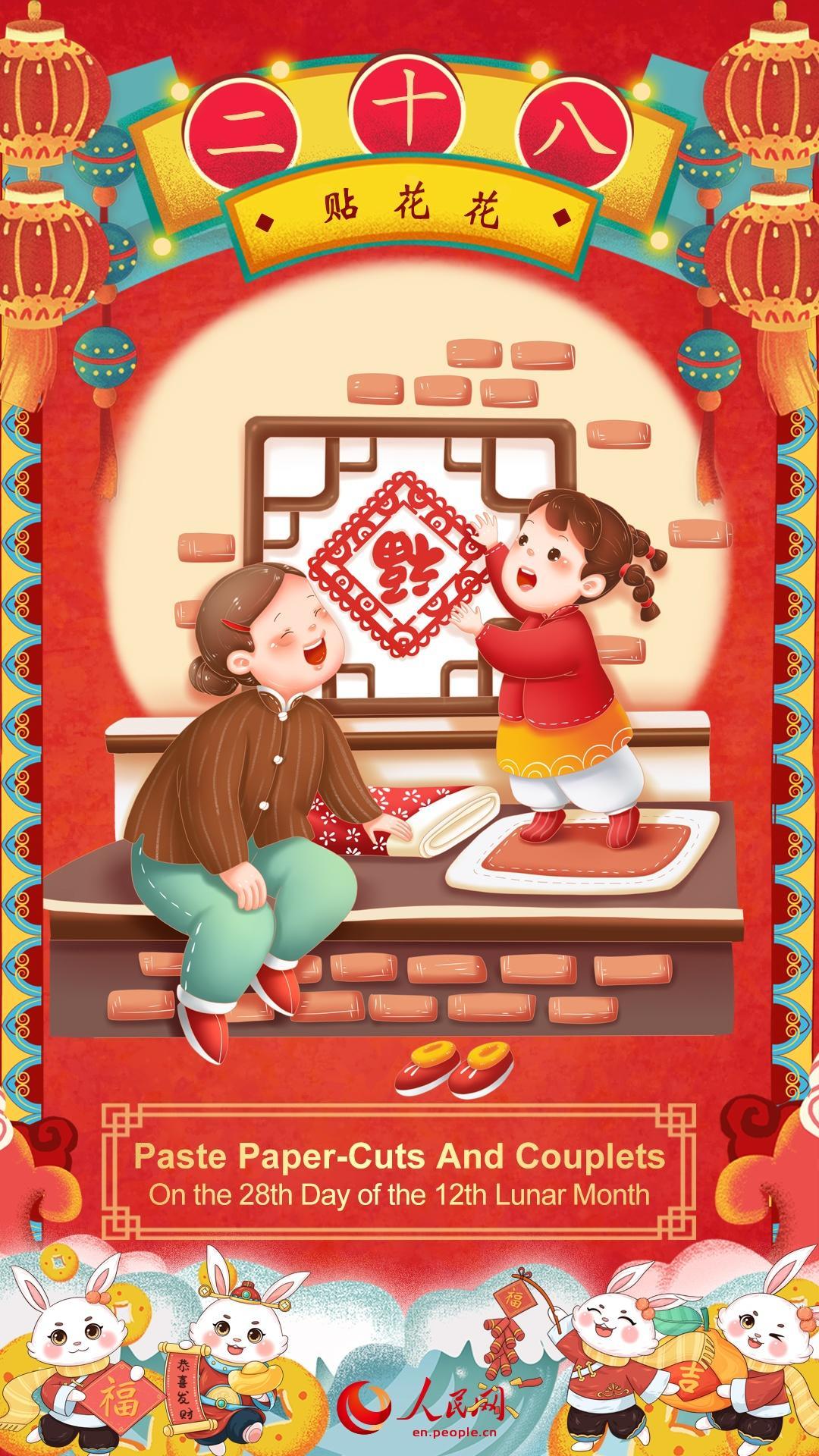
The 28th day of the final month in the Chinese lunar calendar marks an important moment in the preparations for the Spring Festival, also known as the Lunar New Year. This day is filled with meaningful traditions reflecting the excitement and hope for a prosperous and happy year. These customs, rich with cultural significance, vary across regions, but all share a common purpose: to bid farewell to the old and welcome the new.
Decorating the Home: A Festive Transformation
Today, families adorn their homes with vibrant decorations, including window paper-cuts, Spring Festival couplets, and traditional New Year paintings. These intricate paper designs and calligraphy works often feature auspicious symbols and phrases, such as "福" (fortune) or "喜" (happiness), to bring good luck and blessings. The act of decorating not only brightens the home but also symbolizes the joy and anticipation of the coming year.
House Cleaning: Sweeping Away the Old
Another significant tradition is the thorough cleaning of the home, often called "sweeping away the dust." Families clean every corner, from windows to floors, to remove the remnants of the past year. This practice represents letting go of bad luck and making space for new opportunities and positive energy in the year ahead.
Steaming Rice Cakes and Buns: A Symbol of Prosperity
Food preparation is an essential part of the day, with families in northern China steaming buns and those in the south making rice cakes or "年糕" (nian gao). The name "nian gao" sounds like "higher year" in Chinese, symbolizing progress and success in life. These delicacies, often sweet or savory, are delicious and carry the hope for growth, prosperity, and happiness.
Shopping for Festive Goods
The 28th day is also dedicated to stocking up on "年货" (New Year goods). Families visit bustling markets to purchase candies, nuts, seeds, tea, and other snacks to welcome guests during the Spring Festival. These festive items contribute to the cheerful atmosphere and reflect the spirit of hospitality and generosity.
Honoring Ancestors
This day is also a time to prepare offerings for ancestral worship in many regions. Families arrange fruits, drinks, and other items to honor their ancestors during the Spring Festival. This tradition is a way to express gratitude, respect, and a desire for their blessings in the new year.
Dyeing Red Eggs and Haircuts: Unique Regional Customs
In some areas, especially in Jiangnan, people dye eggs red to symbolize celebration and vitality. Red eggs are often used in rituals or given as gifts to friends and family. Meanwhile, in other regions, it is customary to get a haircut on this day, signifying a fresh start and the removal of past burdens.
Preparing New Clothes
Parents often prepare new clothes for their children on this day. These new garments, often in bright and festive colors like red, symbolize renewal and a way to start the new year with a fresh and joyful appearance. Wearing new clothes during the Spring Festival reflects hope and optimism for the days to come.
A Day of Renewal and Joy
The 28th day of the lunar year is much more than a day of preparation—it is a celebration of renewal, unity, and hope. Each tradition, whether it involves decorating the home, preparing food, or honoring ancestors, reflects the deep cultural values of the Chinese people. As families come together to prepare for the Spring Festival, this day serves as a reminder to cherish the past while looking forward to a brighter future.
Related News:
Watch This | Amazing China: Experience the rituals of Spring Festival
UN chief extends Lunar New Year wishes
Photos | Sichuan panda cubs send New Year greetings and blessings to people worldwide




















Comment